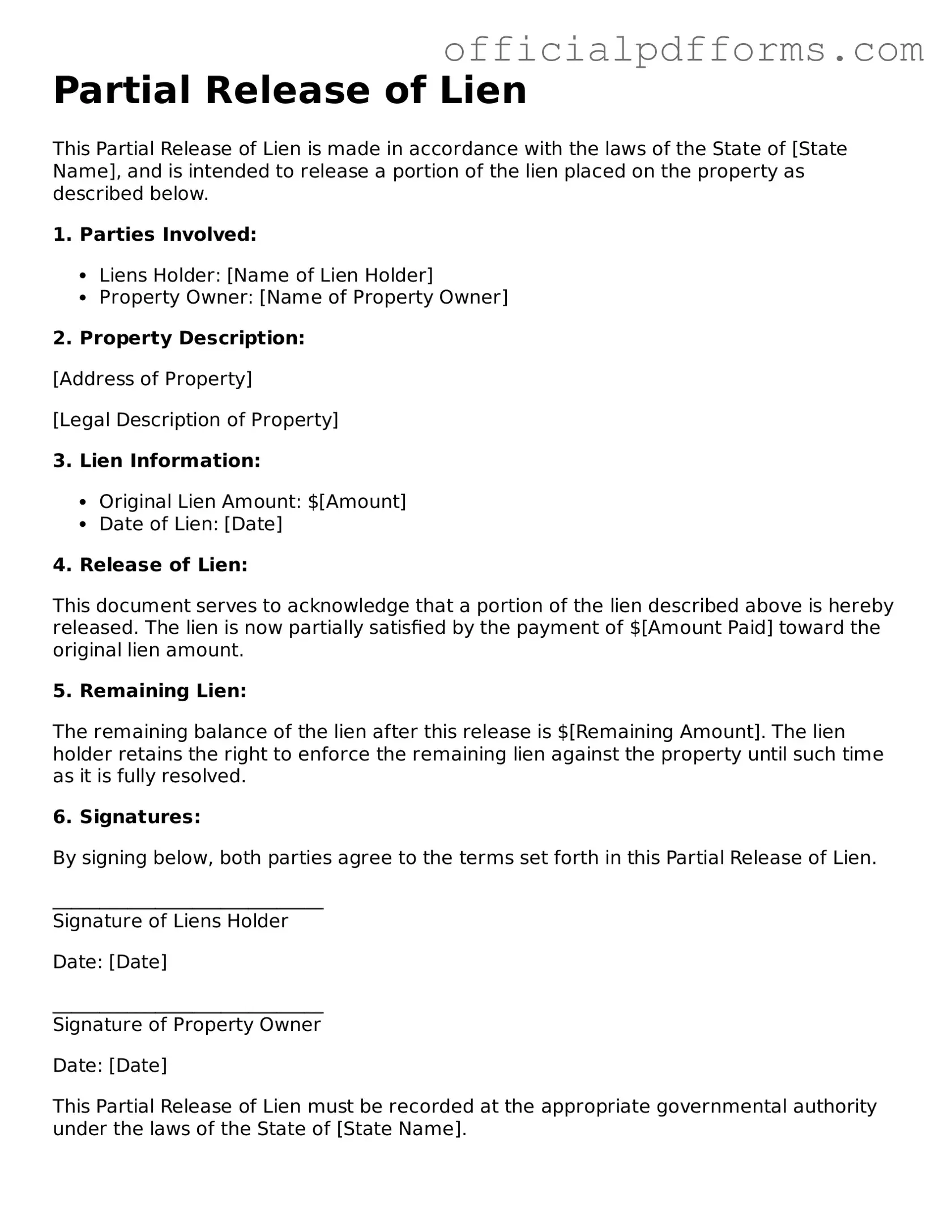What is a Partial Release of Lien?
A Partial Release of Lien is a legal document that removes a portion of a lien from a property. This occurs when a debt has been partially paid or when specific obligations have been fulfilled. By executing this document, the lienholder agrees to release their claim on a designated part of the property, allowing for more flexibility in ownership or financing.
When should I use a Partial Release of Lien?
This form is typically used when a property owner has made partial payments on a debt secured by a lien. It can also be applicable when a contractor or subcontractor has completed a portion of their work and wishes to release their claim on that completed work. Common scenarios include:
-
Partial payment of a construction loan.
-
Completion of specific phases in a construction project.
-
Negotiations with a creditor to settle part of a debt.
Who needs to sign the Partial Release of Lien?
The Partial Release of Lien must be signed by the lienholder, which could be a contractor, subcontractor, or financial institution. Additionally, the property owner may need to sign the document to acknowledge the release. This ensures that all parties are aware of the changes to the lien status.
How do I file a Partial Release of Lien?
To file a Partial Release of Lien, follow these steps:
-
Complete the Partial Release of Lien form with accurate information.
-
Obtain the necessary signatures from the lienholder and property owner.
-
File the completed form with the appropriate county or state office where the original lien was recorded.
-
Keep a copy of the filed document for your records.
Is there a fee associated with filing a Partial Release of Lien?
Yes, there may be a filing fee associated with submitting a Partial Release of Lien. The fee varies by jurisdiction and can depend on the specific office where the document is filed. It is advisable to check with the local recording office for the exact amount and acceptable payment methods.
What happens if I do not file a Partial Release of Lien?
If a Partial Release of Lien is not filed, the lien will remain in place for the entire amount owed, even if partial payments have been made. This can affect the property owner's ability to sell or refinance the property. It may also lead to complications if the lienholder attempts to enforce the lien for the remaining balance.
